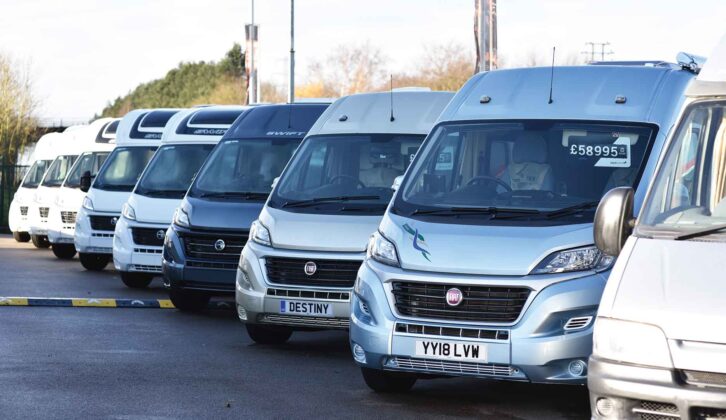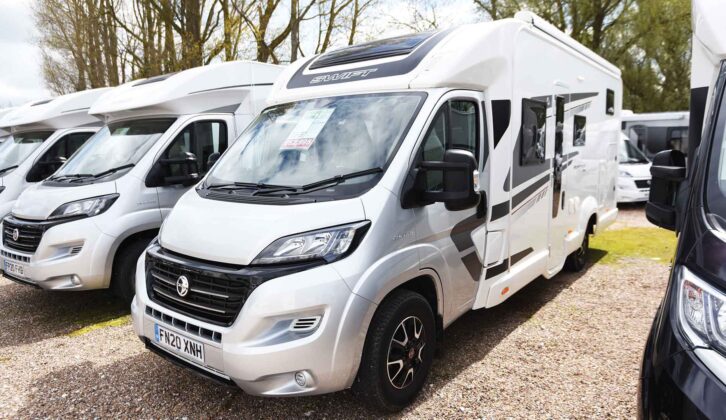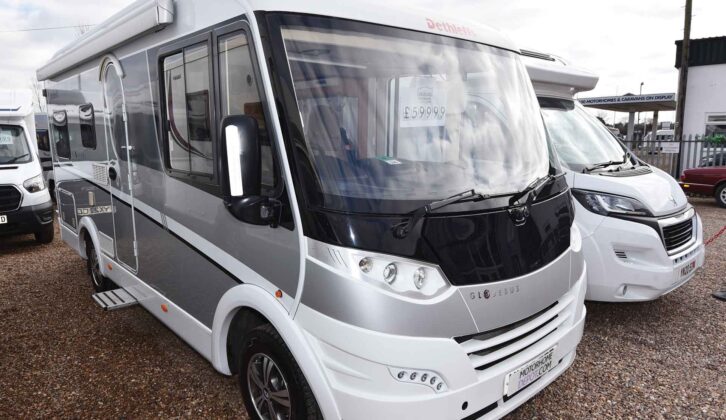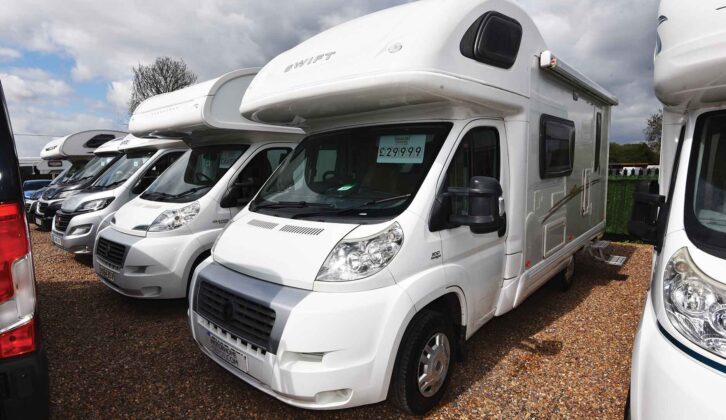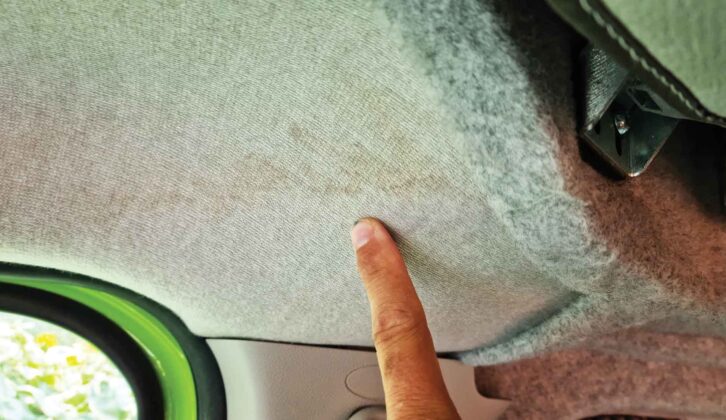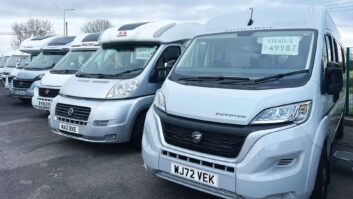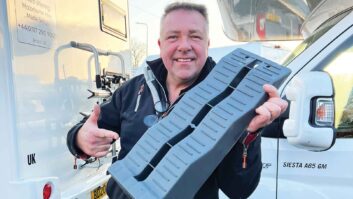The best used motorhomes are just brilliant – they allow you to buy far posher vehicles than your budget would allow, for a fraction of the price of a new ’van. Sepreciation can be a wonderful thing when you’re buying a used motorhome.
And make no mistake, a high-end model is still a high-end model, even when it has a few thousand miles under its tyres and a few wrinkles on the leather upholstery.
The other point to bear in mind here is the importance of timing. Brexit, Covid and the chip shortage initially pushed up prices, and many have-a-go converters popped up to meet the increased demand of those looking to avoid the risk of foreign travel. This led to a shortage of used stock and prices rose. It was very much a market for those selling a motorhome back then.
Things have stabilised and some firms that banked on high demand and inflated prices continuing are now starting to get a bit of a reality check. Energy and fuel prices have started to come down and this has also helped reduce costs. So it’s not a bad time to buy, and there are deals to be done.
But before you rush off to Facebook Marketplace with visions of Hymer A-class motorhomes for pennies, it pays to do your homework and be fully aware of just what you’re getting into. It pays to be a savvy shopper when you’re buying a used motorhome – here’s how.
Practical Motorhome is supported by its audience. When you purchase through links on our site, we may earn an affiliate commission. Learn more.
Buying a used motorhome
Choosing the right used motorhome
Buying a used motorhome privately
Precautions to take when you’re viewing a vehicle
Get an HPI check – but you’ll still need to exercise caution
Buying a used motorhome from a dealer
Buying at an auction
Haggling
Choosing the right used motorhome
Pick your layout
Before heading for the online classifieds, it’s wise to visit a motorhome show, such as the February NEC Show, or your local dealer, to get a feel for what sort of motorhome layouts are out there.
After you’ve made your mind up over whether to buy a new or used motorhome, the layout is by far the most important factor, but you need to drown out the online noise and focus on one that suits you. No single layout works for every buyer and your needs will change over time, as families and lifestyles evolve.
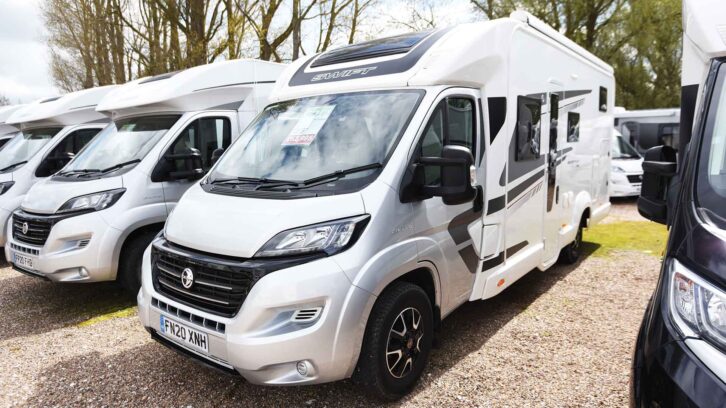
We would also suggest hiring a ’van first – or borrowing one from a mate. In some cases, ‘van owners will be renting out their motorhomes too – whichever route you go down, it’s a great way to see if a particular layout suits the type of holidays you like taking.
Do your homework
Once you have narrowed down your choice of layouts and models, it’s time to start researching those models. Motorhome owners clubs (if there is one) is always a good place to start, as club members tend to be a fount of knowledge about their particular brand or model. They can also help highlight any common issues with the vehicles.
You might have a preference for one base vehicle over another, but if not, don’t worry too much about what underpins your motorhome – all are based on commercial vehicles, and all have their idiosyncrasies. If you’d prefer to, test drive motorhomes on different bases, to see if any stand out.
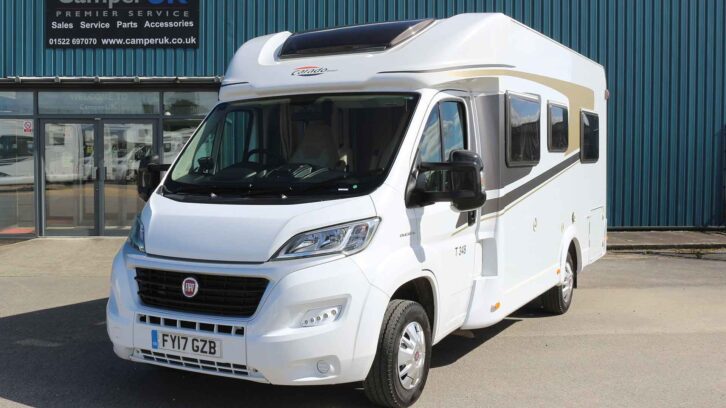
Older vehicles, especially over 10 years of age, can suffer from rust, so always be sure to carefully check their undersides.
For a good source of basic information, visit www.gov.uk/check-mot-history, which allows you to check a vehicle’s previous MoT history simply by typing in the registration number. A history of failures owing to rust or corrosion should be a red flag. Equally, constant MoT failures because of bald tyres, blown bulbs or perished wipers might potentially hint at careless ownership. Note also the mileage between MoTs and check this with the mileage shown on the vehicle.
Something else to ensure is that you have the correct driving licence for the ‘van you have in mind – check out our guide to ‘what driving licence to I need to drive a motorhome‘ for more on this.
Buying a used motorhome privately
Is the listing legitimate?
Most people on the hunt for the best motorhomes start by starting their preliminary research online and this can soon lead down the rabbit hole of online sales.
Buying privately can be a good choice if you’re looking to be a frugal motorhomer. However, there are several hazards to avoid here, with the most obvious one being, does the vehicle even exist?
For example, according to banking brand TSB’s fraud experts following a 2023 investigation, more than a third of Facebook Marketplace ads could be scams.
The fake ones tend to follow a familiar pattern, starting with a really good price. The scammers are getting clever at pricing and their vehicles are often priced at a believable 70% of what that model normally sells for. They’re rarely a quarter or half price these days – it’s too easy to spot. So the price tempts you to click on the listing, where the text is very often
cut and pasted from other listings, so it tends to be quite generic.
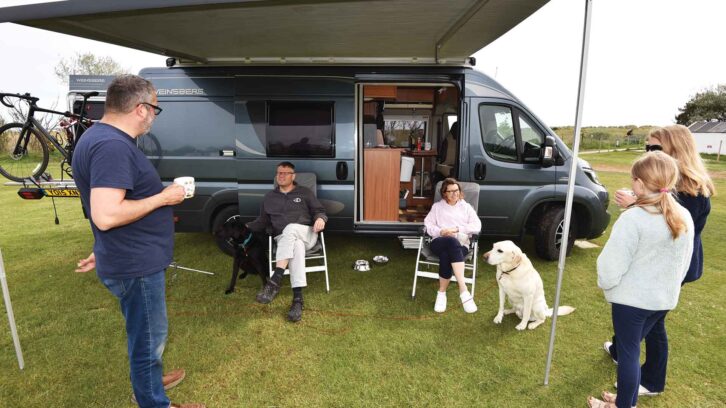
Phrases such as ‘immaculate condition, drives great, no faults!’ might be typical. They also tend to highlight ‘no pets or smokers’ and often include odd terms such as ‘no liens or encumbrances’, clearly taken from a US listing.
But before you delve too deeply into the wording, always click the button marked ‘seller’s other items’. If they’re selling 23 other ’vans, a speedboat, 37 cars and a Ducati, they’re unlikely to be a private seller, and might not even be genuine.
Usually the vehicles in the photos are perfectly genuine, with the images having been lifted from other websites, so don’t take too much notice of the pictures. Criminals have realised that it’s far easier to steal photos than an actual vehicle – for starters, you don’t even need to be in the same country. There are buildings in some parts of the world that are filled with people cutting and pasting these listings.
The golden rule for using Facebook Marketplace is never, ever send money up front. No exceptions. No reputable private seller will ask for this, nor will any bona fide trader.
Always contact the seller first via Messenger and ask for their phone number. Scammers will invent every excuse in the book not to talk to you, while a genuine seller should provide it. Ignore anyone who won’t talk to you – it’s a massive red flag.
Ring them and ask lots of questions – how long have you had it? Any faults? Why are you selling it? Where have you taken it on holiday?
The questions really don’t matter that much, the key thing is to keep the seller talking so you can suss them out. Always start the call (especially if they claim to be a private seller) by saying you’re “ringing about the vehicle for sale”. This will flush out a dishonest trader because they will be forced to ask you, “Which one?”
No matter which platform you might be considering when you’re choosing a motorhome, remember the golden rule – never send any money up front.
Now’s the time!
Another common tactic that you are bound to come across – and something that is found in almost all online scams – is the factor of time pressure.
The way that this is applied can vary. It can be direct and often intimidating; for example, you might be told, “I must have the money today at that price if you’re a serious buyer.”
The sting with that phrase is the ‘serious buyer’ bit, which throws the gauntlet down to some people, who think: “I’ll show you I’ve got money!”
Or it can be more subtle. They’re often very good at getting under your skin and tend to be expert at dangling carrots in front of you: “You sound like the kind of buyer I’d love to have the motorhome, but other people are coming to look at it, so I’d really need a deposit sent today to hold it for you.”
This is designed to trigger the fear of missing out and links to our desire to bag a bargain. It’s quite a common sales tactic to mention ‘another buyer interested’ in the vehicle, but this is usually to add time pressure, and makes the vehicle seem all the more desirable.
Once more, the golden rule in this situation is never to part with any money online if you haven’t seen the vehicle or know for sure that the seller is really reputable.
It’s complicated…
Another tell-tale sign of a scam is complexity. Real sellers tend to be far simpler to deal with. Scammers tend to be handling many people at the same time and they don’t always remember who is who – they are often working on multiple texts, phone calls, emails and social media messages.
This can make their replies arrive at irregular intervals and sound suspiciously disjointed. With all scams, the aim is to get you to send money, but they are becoming increasingly sophisticated in how they do this – few go straight to the deposit or the price.

Even if you get to the payment part, it will be complicated and will involve money transfer schemes that you might never heard of. If it involves leaving the website you’re on and transferring to another website, it’s very likely to be a scam. Anything complex or out of the ordinary, or involving a bank or a third party you’ve never heard of, is almost always going to be a scam.
As for viewing the vehicle, they tend to never be around when you want to see it, and always have an ill relative or friend who needs to be taken to the hospital. Medical issues tend to be a bit of a theme, you’ll discover.
They often miss trains or suffer a broken-down car when you want to visit, too. Whatever the reason, it’s never straightforward, so any hint of complication is almost always a red flag.
Precautions to take when you’re viewing a vehicle
Assuming that you have navigated your way across these minefields and have spoken to someone who does sound genuine, what do you need to do when you are actually viewing a vehicle?
The first point to make here is that you need to be prepared to travel to wherever the vehicle is.
Don’t let them drive to you in the vehicle (known as an obligated sale) and never agree to meet them halfway. You must visit them at their premises and make sure that they have a V5C log book showing their name and address.
Yes, it’s a pain having to drive to Edinburgh if you live in Manchester, but buying a motorhome is a large purchase and you need to get it right. Without a log book tied to an address, you just don’t know what you’re buying.
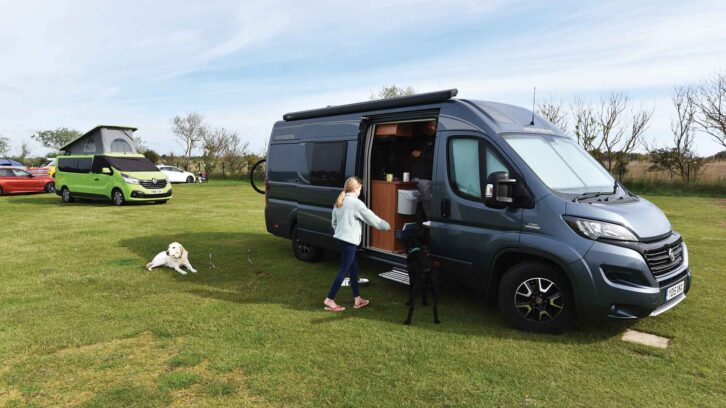
Of course, paperwork can be faked all too easily these days, and the V5C log book clearly states on the front that “This document is not proof of ownership”, but without it, you have very little information to start with.
Before you visit any seller, have a look at their address on Google Maps and see if it actually exists and that the property is commensurate with the vehicle being sold. An £100,000 A-class luxury motorhome is not often found parked on the street by a small terraced house.
For the viewing, take along someone used to working on motorhomes, or a mechanic. Not your mate who once saw someone changing a spare wheel, but someone who really knows their way around the spanners.
It needs to be someone who has at least changed a set of brake pads or replaced a suspension strut. If you’re going at the weekend, why not pay a local mechanic for their time?
If you can’t find anyone, but you’re happy that the motorhome is okay, leave a small deposit (£200 is fine), get a receipt and make sure the sale is conditional on a full mechanical inspection. Most genuine sellers will be fine with this and many now expect it. Plenty of professional motorhome inspectors advertise their skills – use one of them. The AA and RAC will sometimes offer these services, too.
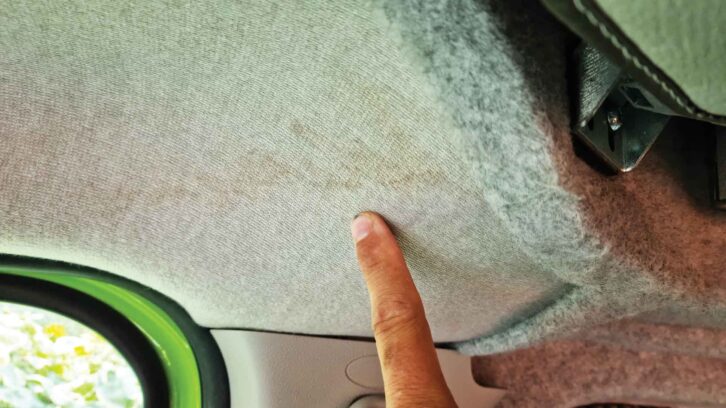
The main things that you want to be really aware of with secondhand vehicles are damp and water ingress (a wet dog smell can be a tell-tale sign, as well as staining on interior panels) and evidence of body rust. Take a look at John Sootheran’s tips on the interior checks to carry out when looking at a secondhand motorhome privately for more things to look out for too.
Always get on your hands and knees with a torch to inspect for corrosion on the underside of the vehicle. Water ingress damage and rust are the two most expensive things to fix, so take them very seriously.
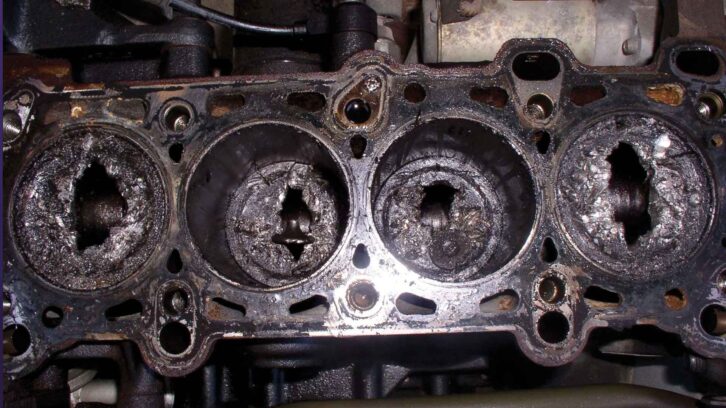
an invoice. A snapped cambelt will write the engine off – like in this photo!
Mechanically, you’re listening out for knocks and bangs when driving the vehicle, and ensuring that the engine doesn’t smoke. It’s also very important to make sure that it’s had a cambelt change at the appropriate interval (if one is fitted).
Automatics will need to shift gear smoothly. Bear in mind that most used vehicles have faults, especially if they’re older – it’s how minor or major they are that you need to know.
A minor scratch on the paintwork can be treated easily, but lots of dashboard warning lights spell trouble.
Get an HPI check – but you’ll still need to exercise caution
You can have a basic HPI Check done on any potential purchase and these cost from £19.99 (they do a really basic check for £9.99, but we’d go for the higher-priced version).
Alternatively, mytextcheck (text the reg number to 83600 – it costs £3 plus your usual network rate) will provide you with a text that will detail basic information about the vehicle, including the reg number and the final four digits of the VIN, and whether it has been scrapped, had a colour change or been stolen. Bear in mind that HPI also checks for outstanding finance, while mytextcheck does not.
You also need to keep an eye out for cloned vehicles when buying preowned. Generally, stolen vehicles will be flipped as rapidly as possible, highlighting the importance of good motorhome security, so new numberplates and tampered-with VIN numbers and chassis plates are what you’ll commonly find. These are usually easily spotted by a mechanic or a technical inspector.
A good tip from the police stolen vehicles recovery unit is always to ask to see photos of the seller on holiday in the vehicle. We all love snapping our motorhomes and if they can’t provide this on their phone in front of you, it’s a real red flag. Paperwork can all be forged, but holiday photos are trickier.
Buying a used motorhome from a dealer
We’ve focused much of this feature on buying privately, because that’s where the best bargains can usually be found, but if you’re looking for more safety and reassurance, we’d recommend visiting your local motorhome retailer.
You’ll pay more, because they have much higher fixed costs and have to prep and warranty their vehicles, but you’ll get peace of mind and a better level of customer service.
It’s wise to ask how long a dealer has had the vehicle in stock – a ’van that has been standing around for months might have done so for a number of important reasons. It’s usually because it is slightly overpriced or has a more quirky layout (for example, bunk beds or a desk-style lounge).
Confusion over future legislation has also seen a few electric campervan conversions being offered at bargain prices – these won’t suit all buyers, but are worth looking at if you don’t like travelling long distances to campsites. All of these vehicles can be ripe for being haggled over.
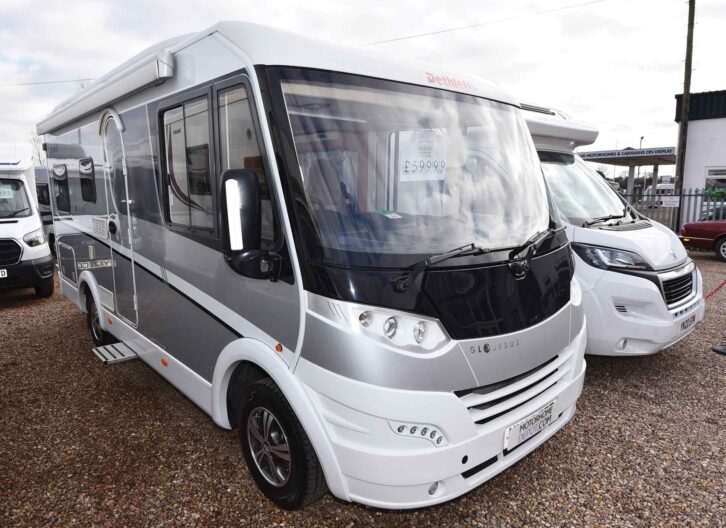
Buying from a dealer also makes life easier if there is an issue with the vehicle, because you’re protected by the Consumer Rights Act 2015, which essentially states that the vehicle must be fit for purpose and of satisfactory quality, and match its description (always take a photo of the original advertisement or screen shot it on your computer). Under the Act, if a fault occurs between 30 days and six months from when you collected the vehicle, the dealer has one attempt to either repair it or replace it.
After six months, things become trickier, because you have to prove that the fault was there when you took delivery of the vehicle.
If you’re buying privately, you do have some rights – the vehicle must be as described and roadworthy – but they’re much more limited. You’ll only be able to get a refund via the Small Claims Court, a process that offers no guarantee of success.
If you’re buying from a dealer, do check out our annual Owner Satisfaction Awards (which we run in conjunction with the Camping and Caravanning Club). There you’ll find details of dealers who have impressed other readers and motorhome owners – the most recent set of results are from the Owner Satisfaction Awards 2025 and were announced on 18th February.
Buying at auctions
Buying at auction is another possibility. BCA holds dedicated motorhome auctions at various sites and the stock tends to be quite varied. Some dealers will send vehicles with ‘lemon’ layouts, or those that are too scruffy to put on the forecourt, to auction, and it’s quite rare to see pristine motorhomes go on the block.
Yes, you can find bargains there, but you have to really know what you’re doing. In my opinion, unless you’re a seasoned restorer or a mechanic (or can take the advice of someone trusted who is), you’d probably be better off going to a dealer or buying privately.
How to haggle when you’re buying a used motorhome
So you’ve found the best used campervan, you’re happy that the vehicle is genuine and you’ve carried out all of the necessary checks – it’s now time to talk price. However, haggling is becoming increasingly difficult at dealerships – many are moving to fixed-price sales models. The last modern vehicle that I bought (a Volvo from a main dealer) was at the list price because the dealer simply refused to drop a penny.
Some may offer you a higher price for your trade-in vehicle, but haggling is getting increasingly challenging. That said, you should always ask for a better price and never accept the first offer.
Even if you can’t get money off, try asking for something extra, such as a full tank of fuel, a bottle of gas, interior mats or some of the best motorhome accessories. If you don’t ask, you won’t get. Dealers will never mind the question, so you should never be afraid to ask, and it will make the process of kitting out your motorhome that bit easier.
With private sellers, haggling is far more common and easier. Having been trained in haggling from my days in car sales, there are some key golden rules.
Rule number one is, never be the first to say how much you want to pay for the vehicle. If you offer a sum first, the price will always be higher than that.
Whoever gives out the first number loses the haggle. It’s that simple. So no matter how much they might badger you, do not give a number.

However affable the seller appears, always ask them to drop the price first. This phrase is a good one to start with: “So what’s your lowest price? I have brought cash for a deposit and will leave it today if we can agree a price.”
Generally, people won’t immediately give you a price and it’s so tempting to blurt out your number first. Resist this. Talk to them about the motorhome for a good few minutes – tell them how much you like it and that you really want to buy it if the price is right.
Some people try to point out the faults – it needs motorhome tyres, it’s chipped and scratched, and so on – but this has a lower chance of success because it can wind up the seller (it’s their pride and joy!). Remember, making friends with sellers works far more powerfully than nit-picking.
Once you’ve had a good chat, ask them for their best price again. You might need to repeat this pattern a few times. But eventually, they will give you a number.
As soon as you have a price from them, keep a poker face. Even if you’re happy with the price and will pay it, don’t for goodness’ sake say that. Pull a face and go £500 or £1000 lower – or another sensible amount in relation to the overall price.
If they’ve made a reduction in price – say they’ve dropped a £40k vehicle to £35k – offering them £30,000 isn’t going to work, but £32,500 might.

Generally, people will meet halfway when it comes to haggling, but if you disclose your number first, you put the brakes on that lower end-price. It’s about gauging the minimum the seller will accept without insulting them. The best haggles are when both parties get the number they want.
Occasionally, you’ll come across a really good haggler who won’t drop the price and here, you have two options. You could cave and pay the money – which I wouldn’t advise.
Better still, say this: “It’s a shame, I love the vehicle, but I need to get a little off the price for it to work for me. I brought cash for the deposit, too.”
If that doesn’t work, say: “I’m going to have to leave it then, but I’m still interested, so please let me know if you change your mind.” Then drive away and find a nearby coffee shop to sit in for half an hour. Nine times out of 10, your phone will ring within that time. But after half an hour, head for home. Sometimes they will call you in a few days, sometimes not.
Another possible technique is to take a wad of cash for the vehicle – this only works for private sellers, because dealers hate cash (you have to count it and waste time taking it to the bank). This tends to work best on cheaper vehicles – a seller offering an £80k Hymer would prefer a bank transfer, rather than having to count a pile of twenties!
A Hyundai 4WD I bought recently was advertised for £3250, and you could see the seller’s eyes light up when I pulled out bundles of cash. From that point on, the haggling was easy and I bagged it for £2700.
Bear in mind that some private sellers will still prefer bank transfer. Either way, it’s best to practise the art of haggling everywhere you can – even on the high street, where I’ve found some jewellers to be quite receptive to a haggle – and view it as a bit of friendly banter.
Never be shy or embarrassed to ask – personally, I’ll happily blush or be embarrassed to save £1000! The more you haggle, the easier it gets.
The verdict on buying a used motorhome
The market is quite volatile at the moment and there are bargains to bag when you’re buying a used motorhome if you arm yourself with the confidence to explore the used sector.
Just remember the golden rules – never send money up front, never meet sellers anywhere other than their house, and always check the log book matches the address and the chassis number on the vehicle. Get somebody technical to inspect it. Happy hunting!
After successfully buying a used motorhome, one thing you’ll want to pay attention to is the associated weights and limits. You can find about this in my guide to motorhome weights – they may be a source of confusion but it’s crucial to get right for safe and legal driving.
Future Publishing Limited, the publisher of Practical Motorhome, provides the information in this article in good faith and makes no representation as to its completeness or accuracy. Individuals carrying out the instructions do so at their own risk and must exercise their independent judgement in determining the appropriateness of the advice to their circumstances and skill level. Individuals should take appropriate safety precautions and be aware of the risk of electrocution when dealing with electrical products. To the fullest extent permitted by law, neither Future nor its employees or agents shall have any liability in connection with the use of this information. Double check any warranty is not affected before proceeding.
If you enjoyed reading this article, why not get the latest news, reviews and features delivered to your door or inbox every month? Take advantage of our brilliant Practical Motorhome SUBSCRIBERS’ OFFER and SIGN UP TO OUR NEWSLETTER for regular weekly updates on all things motorhome related.
